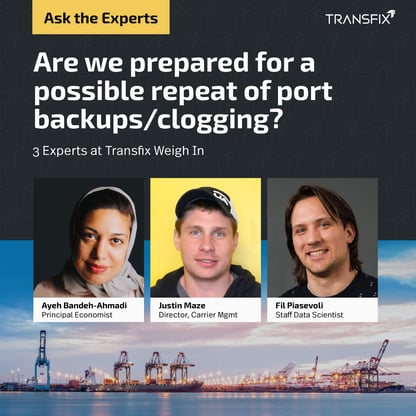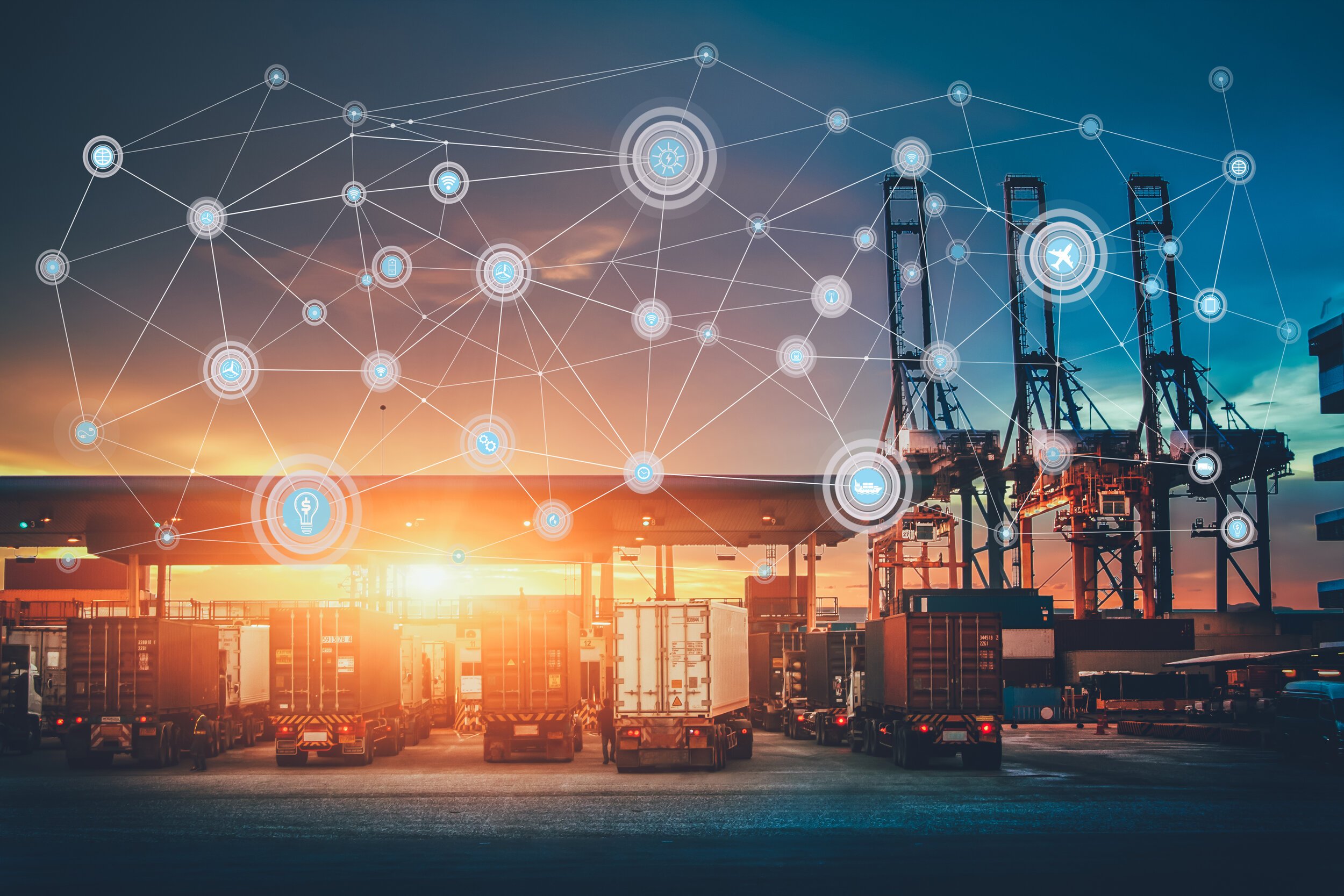3 Experts at Transfix Weigh In

But, the fate of ocean freight is still choppy. With the lead-ups to back-to-school and holiday seasons upon us, the question remains: is the supply chain prepared for a possible repeat of port backups? Our experts, Ayeh Bandeh-Ahmadi (Principal Economist) and Fil Piasevoli, (Staff Data Scientist), weigh in.
Ayeh Bandeh-Ahmadi, Principal Economist
I think that in the winter, the White House was slow to get involved in port backups. This time the White House is being more proactive, pressing shipping companies to pick up empties. Ports are threatening fines, I think, and ports are slowly adding capacity to store empties. So I don’t necessarily expect a replay of the winter, but adjustments to better the situation could still take time.
While ports and politicians are better equipped to manage backups of empty containers, the major risk we need to consider is negotiations between port workers and port associations– just as summer inbound volumes are picking up at those ports. The International Longshore & Warehouse Union is looking for a commitment from the ocean carriers and port managers that make up the Pacific Maritime Association. They’re wanting to hold back on replacing worker jobs with machines that automate container unloading.
This is a major sticking point for port workers. Many still regret a 1960s decision by their predecessors that agreed to mechanize ports in exchange for worker pensions and benefits; the belief is that this agreement has negatively impacted union jobs ever since. In fact, ILWU’s last strike– for four months in the 1970s– was to try to get ports to agree to take back this concession. The effort failed and they haven’t held a strike since, but don’t expect them to give up easily this time around, as port backlogs may present their strongest opportunity to negotiate a generational issue.
It also could turn into a political battle, as public funds are being used to modernize ports, putting the Biden White House in the middle. So far, public funds can be used for modernization– but not for automation that fully replaces workers. Keep your eyes on this space. As mentioned previously, the White House and U.S. Department of Transportation just appointed General Stephen R. Lyons as their Port and Supply Chain Envoy. His job is to reduce bottlenecks at ports by managing billions of dollars of federal infrastructure funding, as well as sticks and carrots to incentivize carriers and ports to manage empty containers. And the White House is feeling the pressure: it’s no surprise that Biden’s first appearance after this month’s record-breaking CPI inflation announcement was at the Port of Los Angeles. At that appearance, he talked about wanting “to pop” the three main global shipping alliances for raising prices by as much as 1000%, which is driving inflation he’s being held accountable for across a lot of goods sectors.
Fil Piasevoli, Staff Scientist
Echoing Ayeh: now that a bottleneck in our domestic supply chain has been exposed and it’s become a dinner table-level of common conversation, I think all those organizations (both Federal and Regional) involved in port activity are aware of the spotlight on them. I think the most fragile parts of the system have been identified, but they remain very complex– both in terms of labor and existing infrastructure. Being optimistic, I’d like to think that better coordination between the aforementioned departments would be the best defense against another port backlog. Changes to infrastructure or labor involved at the ports are much less likely to be quickly modified to prevent a repeat.
Justin Maze, Director of Carrier Management
I do not believe we will see the congestion and bottlenecks to the extent we saw during the pandemic. However, it is important to call out that even as some areas see ease and relief in cost, this is not necessarily true for every turn in the domestic supply chain. While we are seeing an easing in import volume, we also see a bottleneck coming back to life. I’d also like to note that we are seeing issues with chassis availability causing problems in rail efficiency and port movement as containers and chassis sit and wait. Chassis are not being returned promptly or being used for storage – something we noted on the Transfix Take podcast recently. The issue is largely due to the build-up of inventory shippers are now sitting on in order to prep for the upcoming holiday season.




